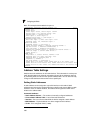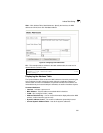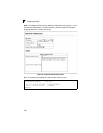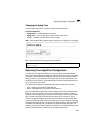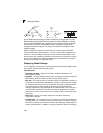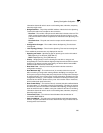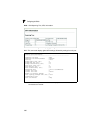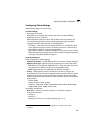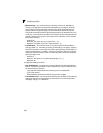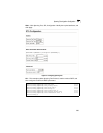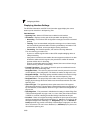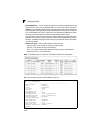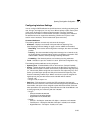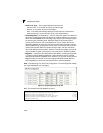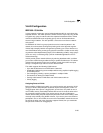
Configuring the Switch
3-98
3
• Maximum Age – The maximum time (in seconds) a device can wait without
receiving a configuration message before attempting to reconfigure. All device
ports (except for designated ports) should receive configuration messages at
regular intervals. Any port that ages out STA information (provided in the last
configuration message) becomes the designated port for the attached LAN. If it is
a root port, a new root port is selected from among the device ports attached to the
network. (References to “ports” in this section mean “interfaces,” which includes
both ports and trunks.)
- Default: 20
- Minimum: The higher of 6 or [2 x (Hello Time + 1)].
- Maximum: The lower of 40 or [2 x (Forward Delay - 1)]
• Forward Delay – The maximum time (in seconds) this device will wait before
changing states (i.e., discarding to learning to forwarding). This delay is required
because every device must receive information about topology changes before it
starts to forward frames. In addition, each port needs time to listen for conflicting
information that would make it return to a discarding state; otherwise, temporary
data loops might result.
- Default: 15
- Minimum: The higher of 4 or [(Max. Message Age / 2) + 1]
- Maximum: 30
Configuration Settings for RSTP
• Path Cost Method – The path cost is used to determine the best path between
devices. The path cost method is used to determine the range of values that can
be assigned to each interface.
- Long: Specifies 32-bit based values that range from 1-200,000,000.
(This is the default.)
- Short: Specifies 16-bit based values that range from 1-65535.
• Transmission Limit – The maximum transmission rate for BPDUs is specified by
setting the minimum interval between the transmission of consecutive protocol
messages. (Range: 1-10; Default: 3)



